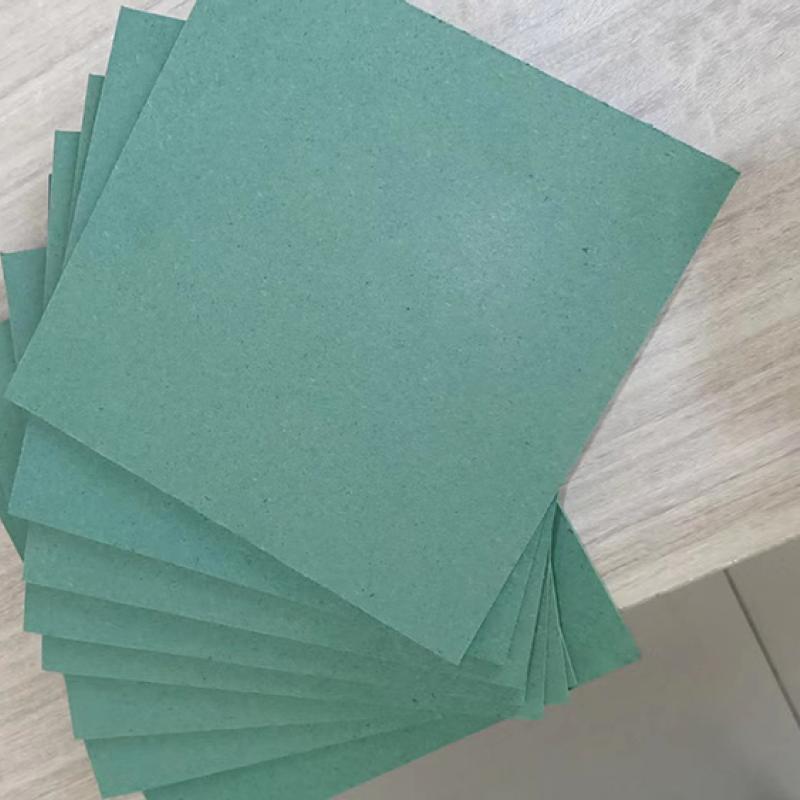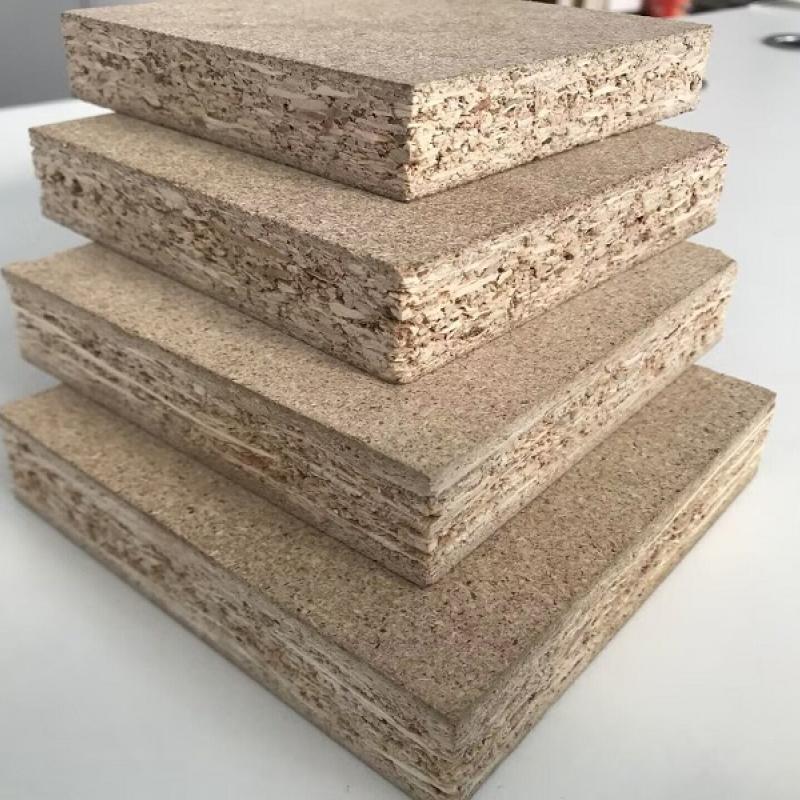What is OSB ?Oriented Strand Board (OSB) is a kind of fresh wood with large diameter and straight trunk as raw material. It is processed along the direction of wood grain by special slicing processing equipment.
Contact Now
Advantages of OSB BoardOSB (Oriented Strand Board) is a composite board made of wood veneer or strands, which has many advantages, these advantages include:1.Strength and Durability: OSB board is constructed of interlaced veneer veneers, making it stronger than traditional particle board. It is able to withstand greater loads and pressures and has better resistance to tearing, making it more durable. 2.Stability: Due to the way OSB panels are constructed, they are not susceptible to moisture and deformation.
Contact Now
An Introduction to OSB Board OSB is Oriented Strand Board ,the upgrading of traditional particle board.
Contact Now
What is OSB Board? Oriented strand board (OSB) is a type of engineered wood similar to particle board, formed by adding adhesives and then compressing layers of real wood strands (flakes) in specific orientations.
Contact Now
Oriented Strand Board Introduction:Oriented strand board (OSB), also called European pine board, is made of small diameter wood, interfelled wood, wood core, board veneer, branch Y wood, etc., and processed into 90-130mm long, 5-30mm wide and 0.5mm thick strands in the direction of wood grain by special planing equipment (long wood planer or two-stage chipping planing equipment), then dried, glued, and formed in the prescribed direction by hot pressing.
Contact Now
Oriented strand board (OSB), also known as Ozon board, originated in the 1970s and developed from structural particle board-waffle board. Since the mid-1980s, it has developed rapidly in North America and Europe, and has begun to replace plywood in large quantities. For use with fiberboard. Oriented strand board is a new type of high-strength environmental protection board.
Contact Now
The raw materials for making particleboard include wood or wood fiber materials, adhesives and additives. The former accounts for more than 90% of the dry weight of the board. The wood raw materials are mostly taken from felled wood in the forest area, small diameter wood (usually less than 8 cm in diameter), felling residues and wood processing residues. Wood chips, shavings, wood filaments, sawdust, etc. processed into flakes, strips, needles and granules are called chips.
Contact Now
Oriented strand board is a new type of high-strength environmental protection board. Under the background of the prominent structural contradiction between the supply and demand of wood in my country and the prevalence of green environmental protection concepts, oriented strand board relies on a wide range of material sources, advanced production technology, and excellent mechanical properties.
Contact Now
Uses of Particleboard1. As a base material: Industrial grade particleboard is suitable as a base material for veneer, and many veneer materials are available. Particleboard has uniform density, small thickness tolerance, and smooth surface, which is a good veneer substrate.2. Kitchen cabinets: Particleboards can be used as cabinet shelves, side panels, back panels, drawers, doors and other parts. Particleboards have performance and economic advantages. The grades of kitchen cabinet boards are M- -S, M- -2, M---3.3.
Contact Now
Uses of Particleboard1. As a base material: Industrial grade particleboard is suitable as a base material for veneer, and many veneer materials are available. Particleboard has uniform density, small thickness tolerance, and smooth surface, which is a good veneer substrate.2. Kitchen cabinets: Particleboards can be used as cabinet shelves, side panels, back panels, drawers, doors and other parts. Particleboards have performance and economic advantages. The grades of kitchen cabinet boards are M--S, M- -2, M--3.3.
Contact Now
The production of chipboard in China has gone through a repeated process from the rise in the 1980s to the decline in the 1990s and then to the rise again in 2000. After the particle board was abandoned by the market due to poor quality and other reasons, many particle board enterprises learned a lesson, introduced advanced production lines from abroad and improved the technology level. After that, the quality of particle board in China has improved significantly, and it has been accepted by the market again.
Contact Now
Our most vital products include: Particle board, OSB, MDF, HDF,Finished MDF, with many superior imported equipments and manufacturing traces, truly offering capability not less than 30,000 cubic meters monthly. All production properly adapt to The United States, India, Middle-east, South Asia, Europe, Middle & South America, many nations and areas, well used and in shape for furnishings, decorations and production industries. We constantly insist on "High-quality first, Service-first" making standard products and comu
Contact Now
Characteristics of OSB1. Wide sources of raw materials and low prices.The raw materials of directional particle board are mainly small diameter wood of soft coniferous wood and broad-leaf wood, fast-growing thinning forest, such as eucalyptus, Chinese fir, poplar thinning wood, etc., with a wide range of sources.2. High output rateCompared with other types of wood-based boards, oriented particle board has a higher output rate.
Contact Now
Particle Board Details.Size1220*2440mmThickness12mmCertificationFSC, CE, ISOMOQ20 CbmDensity600-700 Kg/CbmGlueWBP Mdi Phenolic E0 E1 E2Moisture6-8%Thickness Tolerance+-0.2mmSize Tolerance+-2mmTransport Packageby Standard Exporting PalletsSpecification1220*2440OriginChinaHS Code44101200Production Capacity30000 Cbm Monthly
Contact Now
Particleboard Quality Judgment1. From the appearance point of view, look at the size and shape of the wood chips in the center of the cross-section. The length is generally 5-10MM in length. If the length is too long, the structure is loose, and if it is too short, the deformation resistance is poor, and the so-called static bending strength does not meet the standard;2. The moisture resistance of wood-based panels depends on its density and moisture-proof agent.
Contact Now
Particleboard is a wood-based panel made of wood or other lignocellulosic materials, which is glued under heat and pressure after applying an adhesive, also known as particle board and particle board.
Contact Now
Product advantages:Flame retardant density board, its surface is flat and smooth, which is convenient for secondary processing. It can be pasted with rotary cut veneer, wood veneer, painted paper, impregnated paper, etc., and can also be directly painted, printed and finished; it has good mechanical processing performance, sawing, drilling , tenoning, milling, sanding and other processing properties are similar to wood, or even better than wood. The main purpose:1. Used for hanging panels, wall panels, showcase panels, and sound-absorbing panels;2.
Contact Now
It is said that wall panels originated in England in the 16th century. Everyone knows that the climate in England is cold and humid. In order to block the damp and cold lower part of the wall, wall panels are used for insulation. Another theory goes back to the Netherlands in 1300. At that time, Europe was in the dark Middle Ages, and knights wearing armor and holding long swords often scratched the walls of castles or palaces inadvertently. Protect with wood. At the beginning, wall panels were mainly used in castles and palaces.
Contact Now
The Invention of Wood-based Panels The invention of wood-based panels can be traced back to 3000 BC. At the beginning of the 1st century BC, the Romans were already familiar with veneer manufacturing technology and plywood manufacturing principles. In 1812, the French invented the veneer sawing machine. In 1834, France issued a planer patent. After 1844, the improved rotary cutting machine was officially used in industrial production.
Contact Now
Where are the functions of different density boards used?1. Standard board: Standard board is a material with a smooth side and a textured finish. It is used for cabinets, drawer bottoms and wall panels that belong to hidden parts.2. Glazed panel: Glazed panel is the surface layer that has been painted, often pasted with facing bricks or stamped into facing bricks or noodle patterns, used for wall panels or wall panels around bathtubs.3. Plastic veneer: Plastic veneer is used for sliding doors, which is good in decoration and easy to clean.
Contact Now
App Features:Because of the three-layer criss-cross structure, Ozon board is more uniform than ordinary particle board, has better toughness, strong nail holding power, and is not easy to swell when it is damp. It is used as a house structure abroad and is strong. But it is relatively thick, the surface is uneven and difficult to handle, and it is rarely made into furniture. When Ozon board came to China, it has almost become an upgraded substitute of large core board, with good quality and high price. It is especially suitable for the base layer of the background wall.
Contact Now
Advantages of MDF1. The density of medium density fiberboard is very high, so it is called MDF. Its surface can be pasted with melamine or wood veneer. Its physical properties are very good, the material is uniform, and there is no dehydration problem, so it will not be deformed by moisture.2. Medium density fiberboard is made of crushed plant fibers and pressed at high temperature, so the surface of this board is very smooth and square. It can be used not only as furniture materials, but also as decorative panels, light metal sheets, veneer, etc.3. Is MDF high in formaldehyde?1.
Contact Now
Particleboard AdvantagesA. Good sound-absorbing and sound-insulating performance; Particleboard is heat-insulating and sound-absorbing;B. The interior is granular with a cross-staggered structure, the performance of each part is basically the same, and the lateral load-bearing capacity is relatively poor;C. The surface of the particle board is smooth and can be used for various veneers;D. In the production process of particleboard, the amount of glue used is small, and the environmental protection factor is relatively high.Particleboard DisadvantagesA.
Contact Now






























